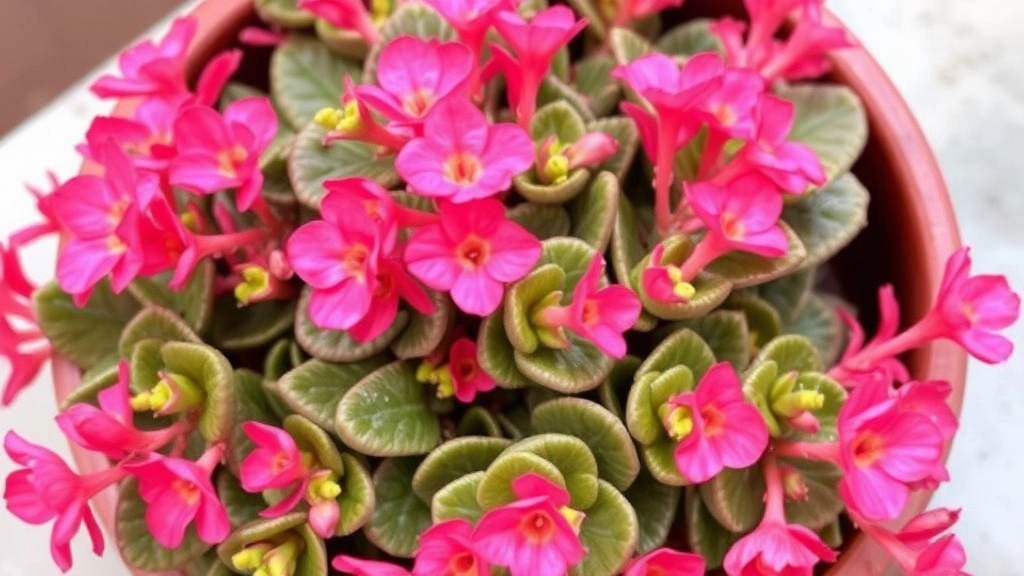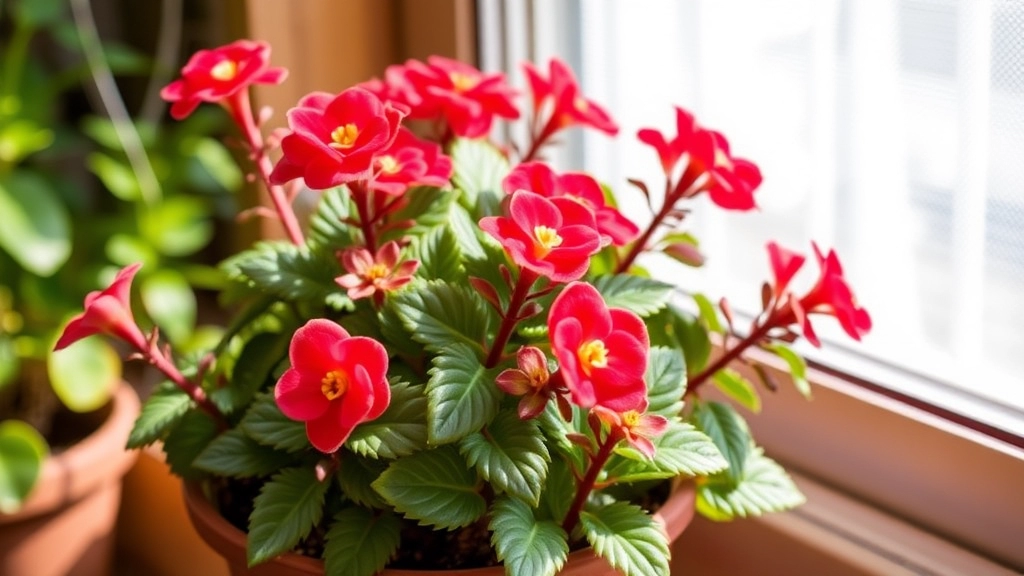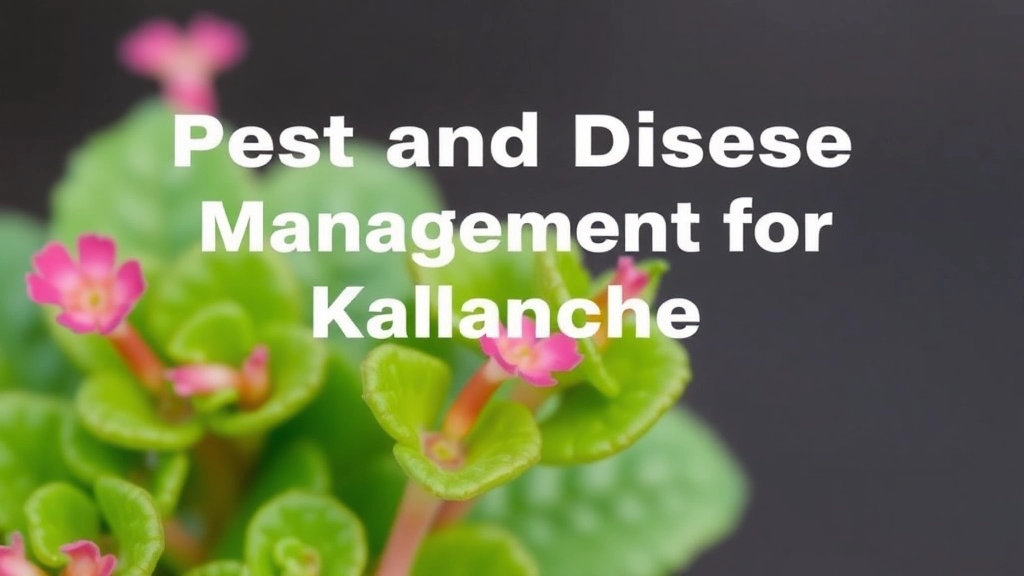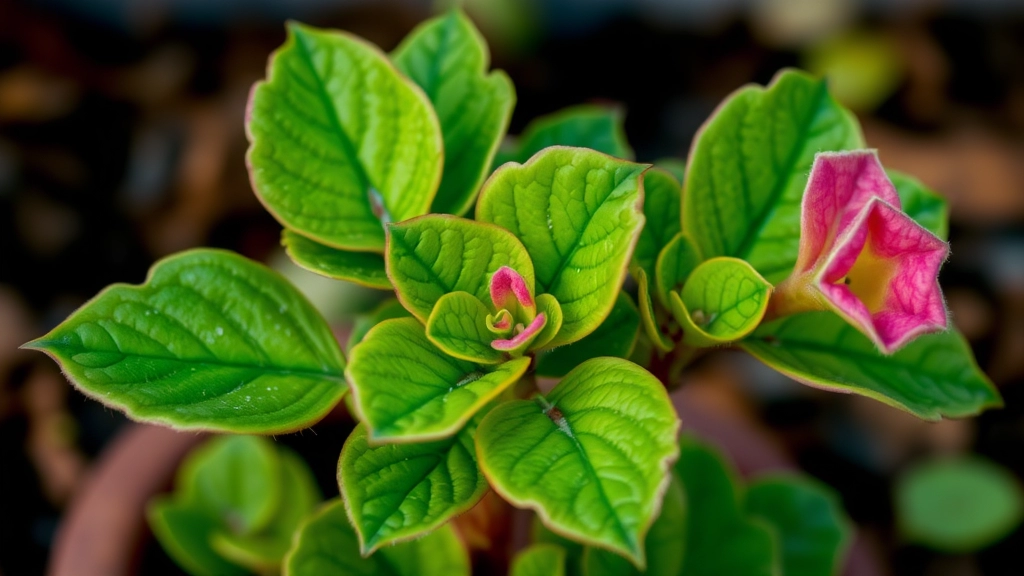Why Are Your Kalanchoe Leaves Falling Off?
Ever wondered why your Kalanchoe leaves are falling off? You’re not alone. Many plant lovers face this issue and it can be frustrating. In this article, I’ll share some common reasons behind Kalanchoe leaves falling off and how you can fix it. From watering habits to light exposure, let’s dive into the simple steps you can take to keep your Kalanchoe thriving.
Understanding the Problem
Understanding why your Kalanchoe leaves are falling off is the first step to solving the problem. Often, it’s due to overwatering, insufficient light, or sudden changes in temperature. By adjusting these factors, you can help your plant regain its health and vibrancy.
Practical Tips
Stick around as we explore practical tips and tricks to ensure your Kalanchoe stays lush and green.
Common Causes of Kalanchoe Leaves Falling Off
When you notice Kalanchoe leaves falling off, it can be concerning. What could be causing this distress? Understanding the common causes can help you restore your plant’s health.
1. Overwatering:
One of the most frequent culprits is overwatering. Kalanchoe, being a succulent, prefers drier conditions. If the soil remains soggy, roots can rot, leading to leaf drop. For more detailed care tips, check out our ultimate guide to Kalanchoe succulent care.
2. Underwatering:
Conversely, underwatering can also trigger leaf fall. If the soil dries out completely for extended periods, the plant may shed leaves to conserve moisture. Learn how to properly water your Kalanchoe in our optimal growing guide.
3. Temperature Fluctuations:
Kalanchoe thrives in stable temperatures. Sudden changes, especially cold drafts or heatwaves, can stress the plant, resulting in leaf loss.
4. Poor Lighting:
Insufficient light can weaken Kalanchoe, making it more susceptible to dropping leaves. These plants require bright, indirect sunlight to flourish.
5. Nutrient Deficiency:
Lack of essential nutrients can lead to poor health. A balanced fertiliser during the growing season can help prevent deficiencies.
6. Pests and Diseases:
Infestations from pests like mealybugs or diseases such as root rot can cause significant stress, leading to leaf drop. Regularly inspecting your plant can help catch these issues early.
Identifying Signs of Stress in Kalanchoe Plants

Ever looked at your Kalanchoe and thought, “What’s wrong with you?” You’re not alone! Spotting stress signals in Kalanchoe plants can feel like decoding a secret message. Let’s break it down together.
Common Stress Signs:
- Droopy Leaves: If your leaves are hanging down, it’s a cry for help. This often means either too much or too little water.
- Yellowing Leaves: A yellow hue can show that your plant is not happy. This could be due to overwatering or nutrient deficiencies.
- Leaf Drop: If leaves are falling off like it’s autumn, it’s a sign of stress. Check your watering habits and light conditions.
- Wilting: A wilting Kalanchoe is often thirsty or stressed. Make sure it’s getting the right amount of water.
- Pale or Stunted Growth: If your plant looks like it’s on a diet, it might not be getting enough light or nutrients.
How to Check for Stress:
- Touch the Soil: Is it soggy or bone dry? The soil can tell you a lot about your plant’s health.
- Inspect the Leaves: Look for spots or unusual textures. Pests might be lurking!
- Assess the Environment: Is it too hot or cold? Kalanchoes like it cozy, not extreme.
Proper Watering Techniques for Kalanchoe
Are you worried that your Kalanchoe might be getting too much or too little water?
Watering is crucial for the health of your Kalanchoe, and getting it right can make all the difference.
Understanding Kalanchoe Water Needs:
Kalanchoe plants are succulents, which means they store water in their leaves and stems. This unique characteristic allows them to thrive in dry conditions, but it also means they can suffer from overwatering.
Key Watering Tips:
- Check the Soil Moisture: Before watering, stick your finger about an inch into the soil. If it feels dry, it’s time to water. If it’s still moist, hold off.
- Water Deeply but Infrequently: When you do water, ensure it penetrates deep into the pot. This encourages the roots to grow stronger and reach for moisture.
- Use Well-Draining Soil: A potting mix specifically designed for succulents will help prevent water from sitting around the roots.
- Adjust for Seasons: During the growing season (spring and summer), Kalanchoe may need more frequent watering. In contrast, reduce watering in the fall and winter when the plant is dormant.
- Observe the Leaves: If the leaves appear wrinkled or shriveled, your plant may need water. Conversely, if they are yellowing or falling off, it could indicate overwatering.
Watering Frequency:
- Spring/Summer: Every 1-2 weeks
- Fall/Winter: Every 2-4 weeks
By following these watering techniques, you can help ensure your Kalanchoe remains healthy and vibrant. For more detailed care tips, check out our best practices for indoor and outdoor care. Additionally, if you notice any issues with your plant post-bloom, our guide on caring for Kalanchoe after flowering can provide further assistance.
Optimal Lighting Conditions for Healthy Kalanchoe Growth

When it comes to nurturing Kalanchoe plants, one of the most common concerns is ensuring they receive the right amount of light. Without proper lighting, your plant may exhibit signs of stress, leading to leaf drop or stunted growth.
Understanding Kalanchoe’s Light Needs
Kalanchoe plants thrive in bright, indirect sunlight. Here are some key points to consider:
- Direct Sunlight: While Kalanchoe can tolerate some direct sunlight, especially in the morning, prolonged exposure can scorch the leaves.
- Indirect Light: Placing your Kalanchoe near a window with filtered light is ideal. A sheer curtain can help diffuse harsh sunlight.
- Artificial Light: If natural light is limited, consider using grow lights. Position them about 12-18 inches above the plant for optimal growth.
Signs of Inadequate Light
If your Kalanchoe isn’t getting enough light, it may show:
- Leggy Growth: Stretched stems with sparse leaves indicate the plant is reaching for light.
- Leaf Drop: Insufficient light can lead to premature leaf drop.
- Faded Colour: Healthy Kalanchoe should have vibrant, rich colours. If they appear washed out, it’s time to reassess their lighting situation.
Seasonal Adjustments
Keep in mind that lighting needs can change with the seasons. During winter months, you may need to reposition your Kalanchoe to ensure it receives enough light.
When caring for Kalanchoe plants, selecting the right soil and potting mix is crucial for their overall health. Many plant enthusiasts often wonder, “What type of soil is best for Kalanchoe?”
### Key Considerations for Soil Selection:
– **Well-Draining Soil:** Kalanchoe thrives in well-draining soil to prevent root rot. A mix that allows excess moisture to escape is essential.
– **Cactus or Succulent Mix:** A pre-packaged cactus or succulent potting mix is an excellent choice. These mixes are designed to provide the drainage Kalanchoe needs.
– **DIY Mix:** If you prefer to create your own mix, consider combining:
– 50% potting soil
– 25% perlite
– 25% coarse sand
– **pH Level:** Aim for a slightly acidic to neutral pH, ideally between 6.0 and 7.0. This range promotes nutrient uptake.
### Potting Tips:
– **Choose the Right Pot:** Ensure your pot has drainage holes. This prevents water from accumulating at the bottom, which can lead to root issues.
– **Repotting Frequency:** Kalanchoe generally needs repotting every 2-3 years. This refreshes the soil and provides more space for growth.
– **Signs of Soil Problems:** Yellowing leaves or a wilting plant can indicate that the soil retains too much moisture. For more information on this, you can check out the [causes and solutions for yellowing leaves](https://planthq.org/why-kalanchoe-bottom-leaves-turn-yellow-causes-solutions/).
Additionally, if you’re interested in specific care tips for different Kalanchoe varieties, you might find this [comprehensive guide to Kalanchoe Panda Plant care](https://planthq.org/kalanchoe-panda-plant-care-comprehensive-guide-tips/) particularly useful.
Pest and Disease Management for Kalanchoe

So, you’ve got your Kalanchoe looking nice, but suddenly you spot some unwelcome guests or signs of disease. What do you do?
Common Pests and Diseases
Kalanchoe plants are generally hardy, but they can face a few pesky problems:
- Mealybugs: These little white fluff balls love to hide in the leaf joints. They suck the sap, which can weaken your plant.
- Spider Mites: Tiny and tricky, they leave fine webbing on your leaves and can cause yellowing.
- Fungal Infections: Overwatering can lead to root rot or powdery mildew. Yikes!
Signs to Watch For
Keep an eye out for these telltale signs:
- Sticky residue: This could mean mealybugs are munching away.
- Yellowing leaves: Often a sign of spider mites or too much water.
- Wilting or mushy stems: Root rot alert!
Quick Pest Control Tips
If you notice any of these issues, don’t panic! Here’s how to tackle them:
- Isolate the Plant: Keep it away from your other plants to prevent spreading.
- Manual Removal: For mealybugs, use a cotton swab dipped in rubbing alcohol to wipe them off.
- Insecticidal Soap: Spray it on affected areas for a broader attack on pests.
- Neem Oil: A natural pesticide that works wonders against a variety of pests.
Preventative Measures
Prevention is always better than cure. Here’s how to keep your Kalanchoe safe:
- Inspect Regularly: Check your plant every week for any signs of trouble.
- Proper Watering: Avoid overwatering to prevent fungal issues.
- Good Air Circulation: Make sure your plant isn’t too crowded; good airflow helps prevent pests.
Seasonal Care Tips for Kalanchoe Plants
As we explore the seasonal care of Kalanchoe plants, it’s essential to remember that these beautiful succulents require tailored attention throughout the year.
Spring Care Tips
- Repotting: Spring is the ideal time to repot your Kalanchoe.
- Choose a pot that is one size larger.
- Use fresh, well-draining soil to promote healthy growth.
- Fertilisation: Start feeding your plant with a balanced fertiliser.
- Opt for a diluted liquid fertiliser every 4-6 weeks.
- This helps boost growth after the dormant winter months.
Summer Care Tips
- Watering: During the hotter months, ensure you adjust your watering routine.
- Water deeply but less frequently.
- Allow the soil to dry out between waterings to prevent root rot.
- Light Exposure: Kalanchoe loves bright light.
- Place it near a south-facing window.
- If outdoors, ensure it’s in a spot that receives filtered sunlight.
Autumn Care Tips
- Pruning: As the growth slows down, consider light pruning.
- Remove any dead or yellowing leaves.
- This encourages new growth in the spring.
- Temperature Control: Keep an eye on temperature changes.
- Kalanchoe prefers temperatures between 15°C to 25°C.
- Avoid drafts and sudden temperature drops.
Winter Care Tips
- Reduced Watering: In winter, your Kalanchoe will need less water.
- Water only when the soil is completely dry.
- Overwatering can lead to root rot during this dormant phase.
- Humidity Management: Indoor heating can dry the air.
- Keep your plant away from radiators.
- Consider placing a humidifier nearby.
FAQs on Kalanchoe Leaves Falling Off
Why are the leaves of my Kalanchoe falling off?
Leaf drop in Kalanchoe can be a sign of stress. It often results from improper watering habits, insufficient lighting, or environmental stressors. Ensure your plant is getting the right amount of water and light.
How can I tell if my Kalanchoe is stressed?
Look for signs such as droopy, yellowing, or wilting leaves, and pale or stunted growth. These symptoms indicate your plant may be under stress.
What kind of light does a Kalanchoe need?
Kalanchoe plants thrive in bright, indirect sunlight. They can tolerate some direct sunlight, especially in the morning, but prolonged exposure can scorch the leaves. If natural light is limited, consider using grow lights.
Can insufficient light cause leaf drop in Kalanchoe?
Yes, inadequate light can lead to premature leaf drop, leggy growth, and faded leaf color. Make sure your Kalanchoe is positioned to receive enough light.
What should I do if my Kalanchoe has pests?
Isolate the affected plant to prevent spreading. Use manual removal methods like a cotton swab dipped in rubbing alcohol for mealybugs, or apply insecticidal soap and neem oil for broader pest control.
How can I prevent leaf drop in my Kalanchoe?
Maintain proper watering habits, ensure adequate lighting, and regularly inspect your plant for pests and diseases. Good air circulation also helps in preventing issues.
What are some common pests that affect Kalanchoe?
Common pests include mealybugs, spider mites, and fungal infections like root rot or powdery mildew. Regular inspection and proper care can help manage these issues.
How often should I check my Kalanchoe for signs of trouble?
Inspect your Kalanchoe at least once a week to catch any early signs of stress, pests, or diseases. This regular check-up can help you address issues before they become severe.
Can overwatering cause Kalanchoe leaves to fall off?
Yes, overwatering can lead to root rot and other fungal infections, which can cause leaves to fall off. Ensure the soil is well-draining and water only when the top inch of soil is dry.
What environmental conditions do Kalanchoe plants prefer?
Kalanchoe plants prefer a cozy environment with moderate temperatures. Avoid placing them in areas that are too hot or too cold.
References
-
Kalanchoe Plant Care: Growing Kalanchoe As A Houseplant
-
How to Grow and Care for Kalanchoe
-
Kalanchoe: How to Grow and Care for Kalanchoe Plants
